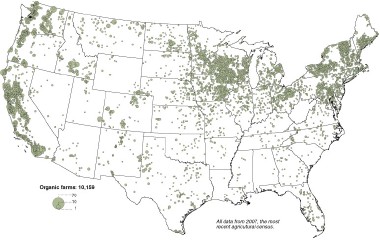The image above is what the metal rods that are capturing the vibrations of the ocean current and creating energy look like in place.
Article: The Weirdest New Source of Alternative Energy: Underwater Vibrations
By: Andrew Grant
The latest frontier for renewable energy is the ocean floor. A novel method of generating power uses a network of metal rods to tap into the currents that flow along the bottom of the ocean (and along riverbeds as well). Water swirls as it flows past the rods, making them vibrate. This phenomenon is painfully familiar to oil companies, which spend large sums of money minimizing such vibrations in order to stabilize offshore drilling equipment. “Everyone was obsessed with suppressing this motion,” says
Michael Bernitsas, the University of Michigan engineer who developed the technology. “At some point it dawned on me that maybe we can do the opposite: Enhance it and harness the energy.”
Many proposed ocean energy projects rely on turbines that require sustained strong currents, but Bernitsas’s device can run efficiently on water flows of just a few miles per hour. He says that the cost of water-flow power production is less than that of solar or wind and that current-based generators can be arranged in large networks to power thousands of homes.
Although his technology has proved itself in the lab, Bernitsas still needs to find the best materials to withstand the elements in a real underwater environment.
Vortex Hydro Energy, Bernitsas’s company, plans to install a prototype—about the size of a large car—in the Detroit River by the end of the year.
Summary: Oil companies for years have been trying to reduce vibrations from underwater currents to help stabilize their offshore drilling equipment but an engineer named Michael Bernitsas discovered that you can get energy from the vibrations themselves. His idea consists of metal rods that run along river bottoms and the ocean floor that captures and transfers the vibrations into usable energy. He class it Vortex Hydro Energy. Michael Bernitsas built a prototype of his idea and put it through a series of tests to prove that his technology actually worked. The tests proved that it does in fact work, only needs a current of a few miles per hour, costs less than solar or wind technology, and could power thousands of houses through areas of generators.
Reflection/Opinion: I think that Vortex Hydro Energy is a great idea if it works as well in the real ocean as it did in its tests. Its a cheaper, more environmentally safe way to provide energy for homes, businesses, etc. Since the article talked about how the idea was discovered through the pipes of off shore drilling equipment, maybe they can combine Vortex Hydro Energy with the oil drilling pipes to harness the energy from both at the same time.
Questions:
1. Do you think that Vortex Hydro Energy would be an efficient energy source?
2. What problems, if there are any, do you think the metal rods would cause for marine life?
3. What would happen if the current isn't strong enough to provide enough energy to power the houses that are relying on it?
http://discovermagazine.com/2009/mar/25-weirdest-new-source-alternative-energy-underwater-vibrations#.UMj0Y4OCmSp












